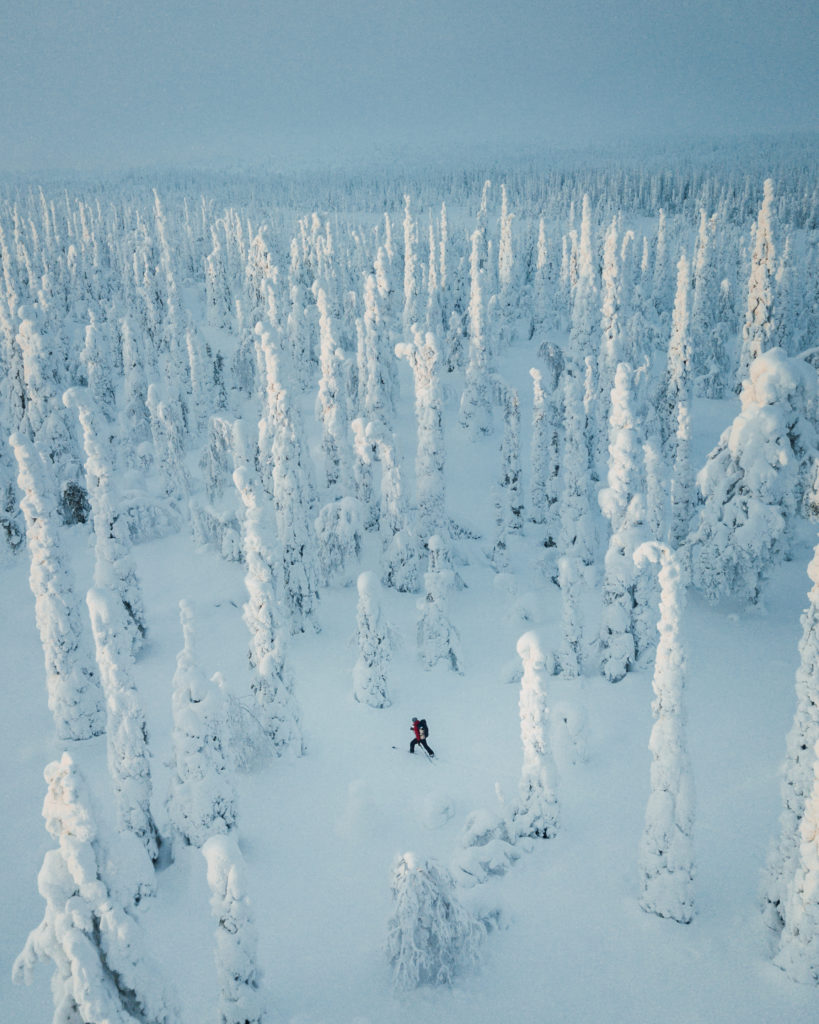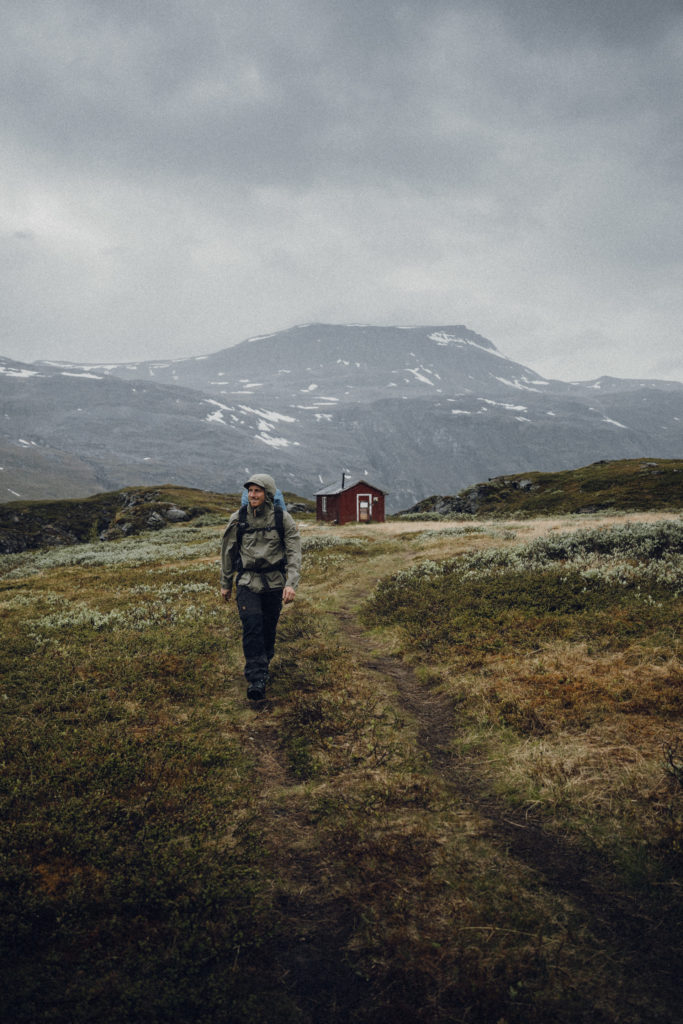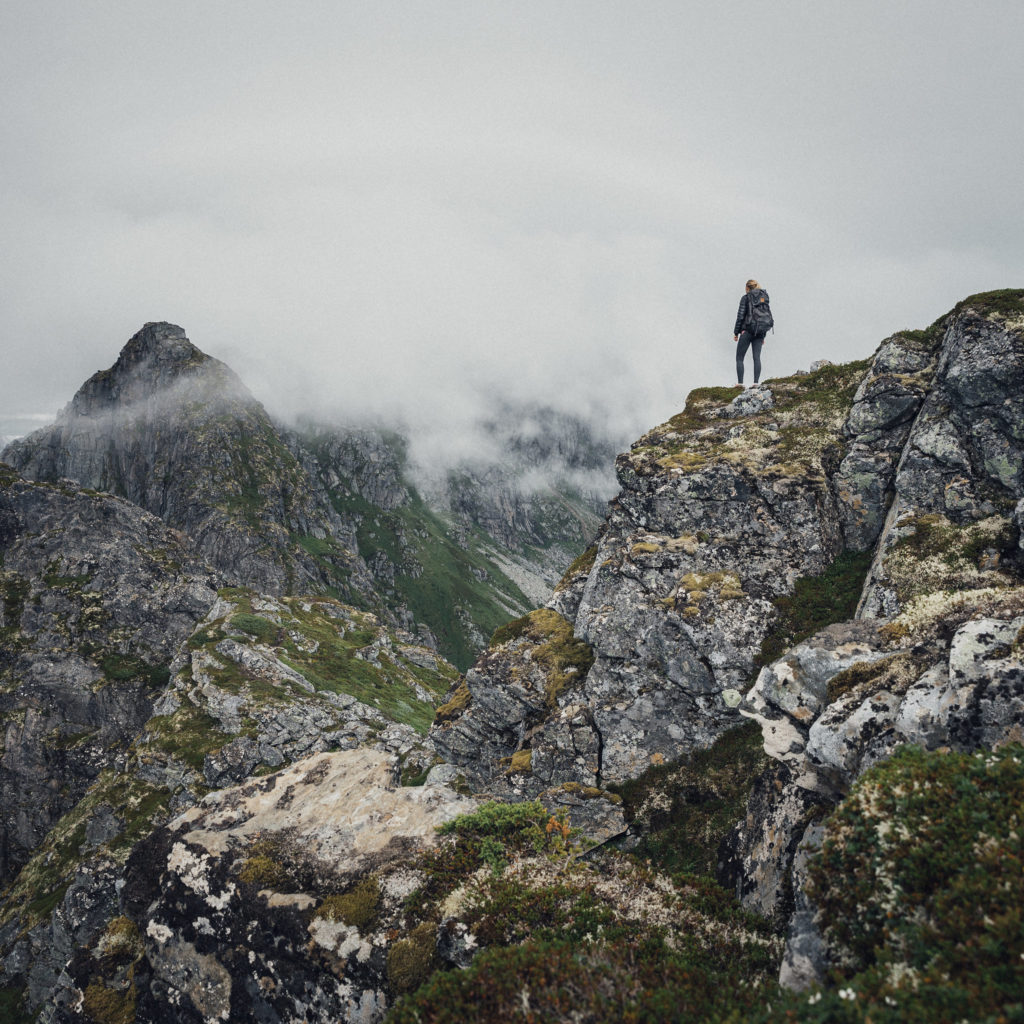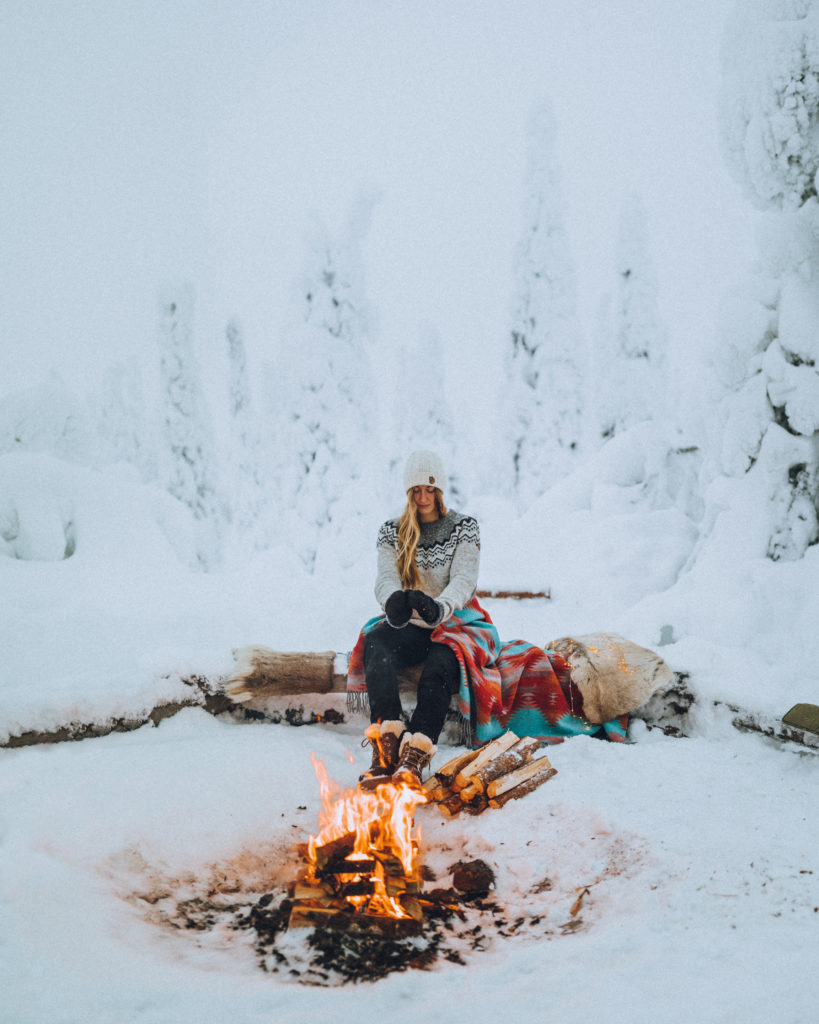Cold climate trekking tips
Staying warm is just the beginning. Don’t let winter catch you out cold.

Crisp, clear mornings, Jack Frost nipping at your nose, your cheeks flush as roses. A day full of promise. These are the things winter treks are made of. When done correctly, with suitable gear and goals, hiking is rewarding at any time of year. Here are some tips to help you enjoy every step, in snow, frost, crunchy leaves or on weather-beaten trails, come rain, wind, snow and shine.

Cold & dry
Although southern Sweden is a little different, most of Fjällräven’s home turf is of the cold and dry type during the winter. And despite temperatures falling well below zero – minus 45 isn’t unheard of in the north and even Stockholm can get to below -20°c – it doesn’t feel as cold as you’d think. This is because it’s a dry kind of cold.
- Down. In this case, we recommend down products. For these kinds of conditions you’re going to need a high fill power, and to avoid getting overly bulky clothing, down is your best option. It has a low weight to volume ratio.
- Wool. Layering is the way to go when it comes to managing your temperature. You want to avoid sweating too much, but if you do – like on uphill stretches – then wool is ideal as it wicks away moisture. Merino is the best bet for base layers.
Cold & wet
Think Great Britain, the Netherlands and northern France. This is a damp type of cold and it actually feels colder than dry cold relative to the actual air temperature.
- Synthetics. When this is the case, it’s all about synthetic insulation and base layers. Synthetic insulation offers insulation even when it’s damp – unlike down. Though it takes up more space for the relative insulating power it gives. But if the temperature is about 0°c, this isn’t an issue.
- Avoid Cotton. Continue the idea of synthetics into your base layer choice. Cotton is a big no-no as it sucks up moisture, leaving you feeling cold after a sweaty trek.

Cold & windy
Wind chill is deadly. The faster the wind the bigger effect on your bare skin. For example, with a wind speed of around 30km per hour, a 0°c air temperature can feel more like -13°c on exposed skin. If the wind picks up to close to 60km per hour, it feels more like -18°c. The point we’re trying to make here is to cover up as much skin as possible and choose fabrics that block the wind.
- Membrane. To stop wind reaching your skin you need to look for clothing that’s built from layers, and where there is a membrane involved to allow heat/sweat to escape but neither wind nor rain to penetrate. Shell garments are ideal. However, they often don’t have much insulating power. Therefore it’s best to layer them over insulating mid-layers.
- Hoods & Taped Seams. If you really want to minimise wind chill, you need to cover as much skin as possible – cue a hooded jacket. The hood will help prevent heat loss but also minimise wind contact against your skin. If you want to go the extra mile, taped seams will help prevent wind sneaking in through the seams of your clothing.
General tips

Layer up but go loose
A base layer helps wick away sweat when you’re active and keep you warm when you’re still. A mid layer is to insulate you from the cold and an outer or shell layer protects you from the wind and rain or snow. The reason we layer, is to give us options. We can peel off a layer when we are active and add one when we’re resting.
Avoid getting wet and sweaty
Another reason to layer is to avoid getting sweaty from the inside and wet from the outside. If you get wet, either from sweat or the rain or melting snow hypothermia is a real risk. Take off extra layers before you start to sweat, but unlike during the summer months, don’t wait too long to add a shell layer when the rain starts to fall.
Eat regularly
Eat small and often to keep you energy levels up and your mood constant. Plus, when you’re hungry your body has to work even harder to keep you warm.
Treat yourself to high-fat snacks (say “yes” to Snickers and Nutella)
Keep high energy snacks close to hand that you can eat on the go. Don’t think about being super healthy at this point. Think about snacks that give you the most bang for your buck. High calorie snacks, particularly ones that combine sugar and carbs with protein – such as Snickers bars and Nutella or peanut butter – are ideal. Tasty too!
Drink frequently
You may not feel you’re losing much water; you’re not sweating like you do in the summer. But every time you breath moisture is escaping into the air around you. So like with food, drink small amounts but do so frequently.
Drink warm liquids
When you do drink, opt for warm liquids. Warm water is great, but sometimes you want a little sugar or some extra flavour. In this case, it’s good to have two thermos flasks – one for warm water and the other for warm tea, hot chocolate or coffee. Also, warm liquids take longer to freeze. Cold water is already halfway there.
Never forget headlamp, compass & map
Days are shorter, the weather more unpredictable and the risk of things not going according to plan are all greater during winter. Always pack a headlamp – rather than hand-held torch, so you’re free to use your hands – as well as compass and map (and know how to use them), even if you’re on a well-marked trail. If the weather closes in you’re going to need these trekking essentials.
Pack extra batteries and power bank
And we all know how bad an iPhone’s battery is when it’s cold outside. Take a fully-charged power bank for your phone etc and extra batteries for your headlamp and keep them warm by storing them close to your body, preferably in a chest pocket.

Bring something to sit on
Cold has this way of seeping into your bones from the ground up. Give yourself a soft spot to sit on and an extra layer between you and the cold ground. An insulated seat pad or even an extra down jacket works, or cut an old foam sleeping mat up to A3 size.
Take gas & stove
You may not like the idea of stopping too long to eat lunch, but it’s worth the extra few minutes to enjoy a hot meal. It’s comforting, but also helps warm a cold body from the inside.
Start small
A final tip: be realistic. A winter hike through snow or over slippery, icy ground will take longer than the same hike during the summer. It’s a good idea to do a trek you’re familiar with so you can focus on getting used to all the other stuff (all the points mentioned above) rather than on navigation. And always, always tell someone at home where you’re going, what you plan to do and when you plan to be back.
Your tips
David Green: “Plan a route that is quality, not quantity. It may be 5km or 15km, the idea is to enjoy not endure (for most of us anyway). That's not to say it has to be easy, but remember why you trek - enjoyment.”
Demitris Makridakis: “The best way to have an enjoyable trek is to get to know your gear before the trek and listen to your instincts and your body.”
Wouter Wesselius: “Don't rely only on your GPS. Always bring a good map and a compass.”
Peer Lawther: “Don’t be afraid to turn back if you’re unsure of your way or if the weather turns against you. As a wise man once said, the mountains will always be there...”
Images: Daniel Taipale @dansmoe
Nature photography tips from the pros
Instagrammers Daniel Taipale & Pie Aerts share their tricks of the trade.
Your best hiking tips
Here are 15 trekking tips for you to put into practice – recommended by you.
Four alternative Christmas ideas
Traditions, likes rules, are there to be broken – and re-made.
